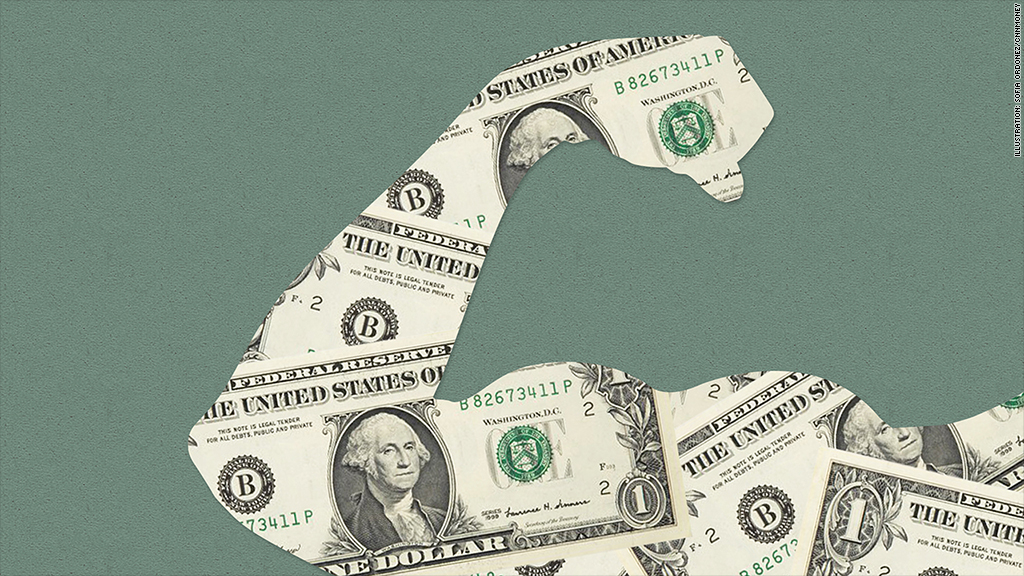What Does a Strong Dollar Mean for Mexico?
By Cynthia Murillo

For the past ten months, the U.S. dollar has been appreciating against other major global currencies. Many economic and political experts, including President Obama, claim this is one of the main signals that the American economy is recovering and rising at a healthy rate. The job market is growing while unemployment rates have steadily been dropping. While the dollar’s strength can be seen overall as an economic gain for the United States, it cannot be ignored that there is a set of winners and losers from this financial phenomenon that trickles down to deeper social and political implications at home and abroad.
It is essential to understand the basics of the opportunities and challenges of a strong currency and what this means to a country economically and politically. When a currency is strong, it means that imports will become cheaper, which in general is beneficial for a consumer oriented economy such as the United States. However, this also means that exports become more expensive to other nations and therefore they will not be able to buy as much from the United States. One very clear example of how U.S. consumers are winning right now, is the low $2 for gas, which allows for extra money to be spent on other things that would not have been possible otherwise. This in turn keeps driving the economy’s growth, which is about 70 percent dependent on consumer spending. On the downside, the dollar’s strength against other currencies also means that Nike, Apple, and other products’ sales will see a drop in revenue due to the fact that they get a large portion of their profits from outside of the United States.
While many are planning their Spring Break vacation in Cancun to take advantage of the currency exchange, which as of Feb. 11 stands at 18.91 pesos per dollar, it is necessary to take a deeper look at what this means for Mexico. Just as the strong dollar means a healthier economy to the United States, a weak peso means an economic slowdown for Mexico. The peso devaluation has gone from 12.94 to the current all time low 18.91 against the U.S. dollar within one year, and it continues to drop every day. While this means that imports from other countries, especially from the United States, are more expensive and therefore consume less, there are other benefits to the Mexican economy. For example, Mexico has a strong manufacturing sector, and it is a country that depends mostly on its manufactured products’ exports instead of commodities like oil. Additionally, compared to other developing countries, Mexico does not have a huge amount of foreign debt, which allows it to focus in its internal economic stimulation.
While economically it seems that the peso devaluation is not all that bad for Mexico, the Peña Nieto administration has received consistent criticism for its mishandling of the nation’s resources and economy. The big manufacturing factories are benefitting and some jobs are likely being created which contribute to the country’s economic growth. However, the remainder of the nation struggles to survive not only from monetary issues but also from the endless violence, crime, corruption and impunity. When Mexican President Enrique Peña Nieto tweeted “Mission accomplished: we have him. I want to inform all Mexicans that Joaquin Guzman Loera has been detained,” there was wide criticism from the often neglected public. Mexico’s President was referring to the detention of famous drug lord “El Chapo,” who just a couple of months ago had escaped from a high-security prison, and was giving praise to his administration for such accomplishment. Meanwhile, Mexicans were indignant wondering how the “government had managed to ‘find’ the most powerful drug lord but can’t find the disappeared 43 college students,” and claimed El Chapo’s capture was being used only as a distraction to the more important social and political issues at which the government is failing. This discontent stems from the impunity and lack of deeper government engagement in finding the 43 students that “disappeared” on September 26, 2014 after a police attack in Guerrero, Mexico. Up to today, little to nothing is known about the whereabouts of these students who were organizing demonstrations to express their political views, and this has caused controversy to the Peña Nieto administration.
When a country’s currency rises or falls, there is not a clear end result but instead both winners and losers are created. Nowadays, with increased international trade, countries are very much economically interdependent. Thus, inevitably, when the U.S. dollar is strong other countries will feel the consequences. Overall, it seems as that the dollar’s strength is benefitting American consumers and therefore U.S. economic growth. On the other hand, the peso devaluation has clearly brought increased attention to its political system, which although many claim as fairly stable, have been widely condemned by its citizens. People are tired of seeing how the government applauds some actions and makes sure to have extensive media coverage, while it suppresses other important issues affecting the wide majority of Mexicans. While the American economy seems to be recovering, the strength of its currency has also served to bring awareness to some of the rooted social and political problems that close partners like Mexico are going through.
